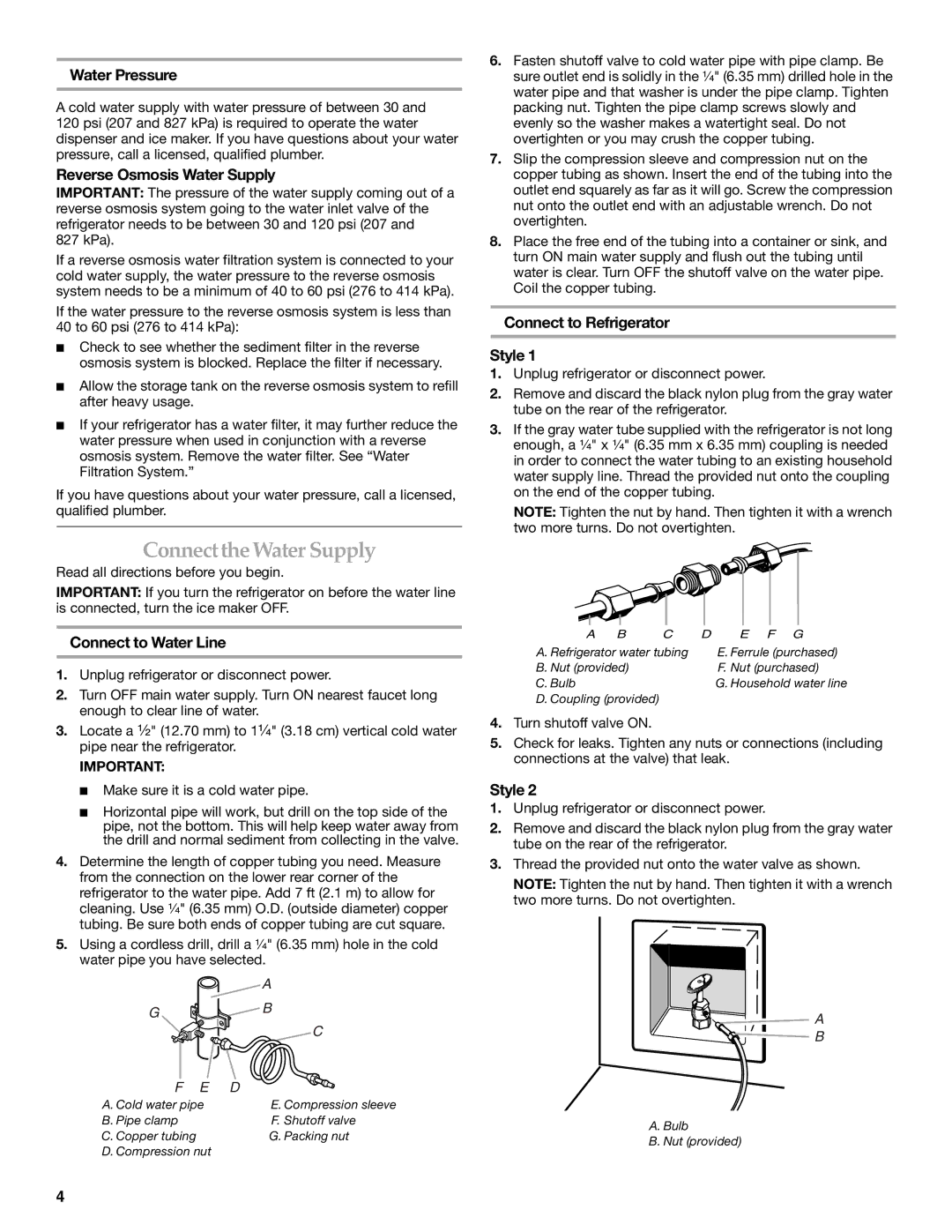KSRT25CRMS01, KSRP25FSBT00, KSRN25FRWH01, KSRS25CSBL, KSRT25CRWH01 specifications
The KitchenAid KSRT25CRBT01, KSRT25CRBL01, KSRP25FSWH00, KSRP25FSSS00, and KSRP25FSBL00 are part of KitchenAid's line of top-quality refrigerators, designed with innovative features that cater to modern kitchen needs. These models are characterized by their robust build quality and stylish finishes, making them both functional and aesthetically pleasing.One of the standout features of these refrigerators is their Energy Star certification, which ensures energy efficiency and reduced utility costs. KitchenAid has integrated advanced cooling technologies that maintain optimal temperatures, preserving the freshness of food for longer periods. The models come equipped with the Preserva Food Care System, featuring dual evaporators, which helps regulate humidity levels separately in both the refrigerator and freezer compartments. This dual system prevents odor transfer and maintains the ideal environment for fresh ingredients.
Another key technology in these models is the Fresh Seal crisper drawers, designed to provide a controlled environment for fruits and vegetables. These drawers enhance the longevity of produce by minimizing moisture loss and protecting delicate items. Additionally, the built-in water filtration system ensures that not only is the stored food fresh, but the drinking water and ice produced are also pure and clean.
Storage capacity is another highlight of the KSRT25 and KSRP25 series. With adjustable shelves and spacious door bins, users can customize their storage spaces according to their needs. The Easy Reach shelving system allows for quick access to frequently used items, enhancing overall convenience in everyday use.
These refrigerators also feature a sleek exterior with a stainless steel finish or a traditional white option, depending on the model chosen. The LED lighting not only illuminates the interior, making it easy to find items, but also saves energy compared to traditional bulbs.
In terms of design, the models include a striking handle style that enhances their modern look, while the fingerprint-resistant finish ensures that they remain easy to clean and maintain. With a combination of aesthetics, functionality, and advanced technology, the KitchenAid KSRT25CRBT01, KSRT25CRBL01, KSRP25FSWH00, KSRP25FSSS00, and KSRP25FSBL00 refrigerators stand out as excellent choices for anyone looking to elevate their kitchen experience.

